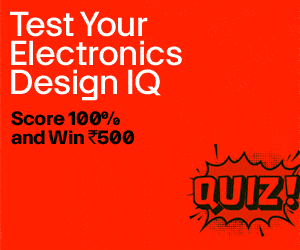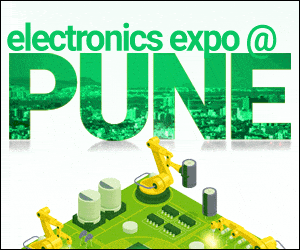Still competing with chip giants, India’s rise in the East raises a crucial question: Are global chip dynamics shifting? The contrast is striking—while the West faces stalled and delayed manufacturing, Asian facilities are rapidly turning ‘operational.’
Less than five years ago, the world scrambled for semiconductors amid the pandemic. Chips were the new oil, and the West rushed to counter China and East Asia’s dominance.
But today, the landscape has shifted. Billions in subsidies. Political promises. Dreams of semiconductor independence.
Yet, Europe’s chip-making ambitions are faltering—stalled by bureaucracy and economic realities. Factories remain unfinished, investments waver, and Asia continues to lead.
But in a surprising twist, it is not just Taiwan and South Korea driving the industry—India is emerging as a player. Once an outsider in the silicon supply chain, it is quietly drawing investments, reshaping the semiconductor map and the power structures that come with it.
Reports in recent months highlight widespread delays and halts in global semiconductor projects—primarily in Europe and, to some extent, the US.
Industry giants like Wolfspeed and Intel have reported suspensions at various fabs, while the GlobalFoundries-STMicroelectronics project in Crolles, France, was recently put on hold for reasons still unclear.
In response, companies are revising investment strategies, optimising costs, and exploring new financing options to stay on course. The question lingers: Is this a momentary disruption, or the start of a deeper shift in the global semiconductor industry?
The Projects in Limbo
At the beginning of this year, Bloomberg reported that the 58:42 fab venture between GlobalFoundries and STMicroelectronics in France had hit a roadblock. Construction stalled over the past 18 months, leading to a pause.
Announced in July 2022 and finalised in June 2023, the €7.5 billion project—backed by ‘European Chips Act’ funding—was set to build a 12-inch (30.48cm) semiconductor fab alongside their existing Crolles facility. Production was slated for 2026, with an annual output of 620,000 wafers.
Meanwhile, Wolfspeed has delayed its $3 billion semiconductor plant in Saarland, Germany. In a June 2024 report, Reuters called this a setback for the European Union’s efforts to strengthen local chip production and reduce dependence on Asia.
Originally planned for electric vehicle (EV) chip production, the project has been pushed back by two years, with construction now expected to begin in mid-2025 as Wolfspeed seeks additional funding amid internal investment pressures and broader market challenges in Europe and the US.
Across the Atlantic, Wolfspeed announced further restructuring, closing its 150mm Durham fab in North Carolina and another facility in Texas, alongside a 20% workforce reduction. The company cited struggles in the EV market as the driving force behind these moves.
In 2024, a Cox Automotive report showed US EV sales rose 7.3% to 1,301,411 units, making up 8.1% of total sales (up from 7.8% in 2023). In contrast, European BEV registrations fell 10.2% in December, with annual volumes down 5.9%—driven by sharp declines in Germany (-38.6%) and France (-20.7%), according to ACEA (European Automobile Manufacturers’ Association).
Intel has also been grappling with delays. Its Magdeburg, Germany, fabs—Fab 29.1 and Fab 29.2—have been postponed due to EU subsidy approval delays and soil removal requirements.
Originally set to begin in summer 2024, construction will now start in May 2025. The two fabs, intended to house Intel’s advanced 14A (1.4nm) and 10A (1nm) manufacturing technologies, were initially expected to start production by late 2027. That timeline has now slipped to between 2029 and 2030.
Intel’s Ohio-based chip projects face similar setbacks. The $20 billion investment in two fabs in Licking County, announced in January 2022, was expected to be operational by 2025. However, weak market demand and delayed government subsidies have pushed construction to 2026-2027, with production now slated for 2027-2028.
| Table 1: The status of major semiconductor manufacturing projects in Europe | ||||
| Company | Location | Investment Amount | Project Details | Expected Completion Date |
| European Semiconductor Manufacturing Company (ESMC) | Dresden, Germany | €10 billion | TSMC, Bosch, Infineon, and NXP joint venture for automotive and industrial chips. Expected by 2027. | 2027 |
| GlobalFoundries | Dresden, Germany | $8 billion | Expansion to double semiconductor production capacity. | Not specified |
| Intel Corporation | Magdeburg, Germany | €30 billion | Fab construction pending approval, expected completion in 4-5 years. | 4-5 years after approval |
| STMicroelectronics | Catania, Italy | €292.5 million | Silicon carbide wafer plant supported by EU Recovery Facility. Target completion in 2026. | 2026 |
| Photonic Chip Plants | Netherlands | €133 million | EU investing in photonic semiconductor pilot facilities. Development to start in 2025. | 2025 |
| Wolfspeed and ZF | Ensdorf, Germany | €3 billion (postponed) | Electric vehicle microchip factory. Project indefinitely postponed due to low demand. | Indefinitely postponed |
| Intel Ireland Fab 34 | Leixlip, Ireland | $7 billion | Expansion of existing Intel campus for 7nm process technology. Expected to be operational in 2023. | 2023 |
| Nexperia | Manchester, UK | Undisclosed | Expansion of wafer fab to increase power semiconductor production capacity. | Not specified |
| Tower Semiconductor & STMicroelectronics | Agrate Brianza, Italy | €3 billion | Joint venture for a 300mm fab focused on analogue and mixed-signal technologies. Expected by 2026. | 2026 |
| X-FAB | Dresden, Germany | €200 million | Upgrading 200mm wafer production for automotive and industrial applications. | Not specified |
| Bosch Reutlingen Expansion | Reutlingen, Germany | €400 million | Expansion to increase automotive semiconductor production. Expected completion by 2025. | 2025 |
| Siltronic AG | Freiberg, Germany | €2 billion | New 300mm wafer plant for semiconductor manufacturers. Operations planned by 2025. | 2025 |
| NXP Semiconductors | Eindhoven, Netherlands | €500 million | Facility upgrade to enhance automotive semiconductor production. Expected by 2024. | 2024 |
On the other side of the coin
In a separate development, three semiconductor projects made headlines recently. German-based Infineon has officially started constructing a new backend semiconductor factory in Thailand. Indian company Indichip, alongside Japan’s YMTL, has made a joint investment of $1.6 billion to establish India’s first silicon carbide (SiC) wafer manufacturing facility.
Last but not least, Fuji Electric has begun mass production of 6-inch (15.24cm) SiC power semiconductors at its facility in Japan.
On January 14, 2025, Infineon began constructing its new semiconductor backend production facility in Samut Prakan, south of Bangkok, Thailand. The first phase of the facility is expected to start operations by early next year, with plans for flexible capacity expansions based on market demand.
Indichip Semiconductors Ltd, an emerging power semiconductor startup in Amaravati, India, has partnered with Japan’s Yitoa Micro Technology (YMTL) to invest ₹140 billion (around $1.6 billion) in establishing a silicon carbide wafer manufacturing plant in Andhra Pradesh.
The initial production capacity is expected to reach 10,000 wafers per month, with plans to scale up to 50,000 wafers per month within two to three years. Initially focusing on 6-inch (15.24cm) SiC wafers, the company plans to transition to 8-inch (20.32cm) wafers.
Furthermore, Fuji Electric has started mass production at its facility in Aomori Prefecture, Japan, as of December 2024. The company had initially planned to begin production in the summer of 2024, but delays due to lower global demand for EVs pushed back the schedule.
Besides, China’s influence in the semiconductor industry is undeniable, with major players deepening their regional investments. At GlobalFoundries’ 2024 summit in Shanghai, the company clarified that its future strategy hinges on local partnerships rather than setting up its own facilities.
Likewise, STMicroelectronics has strengthened its presence through key collaborations with Sanan Optoelectronics and Hua Hong Semiconductor. European firms like Infineon and NXP are also ramping up their ‘Made in China’ efforts, recognising that despite geopolitical tensions, China’s demand remains crucial for growth.










